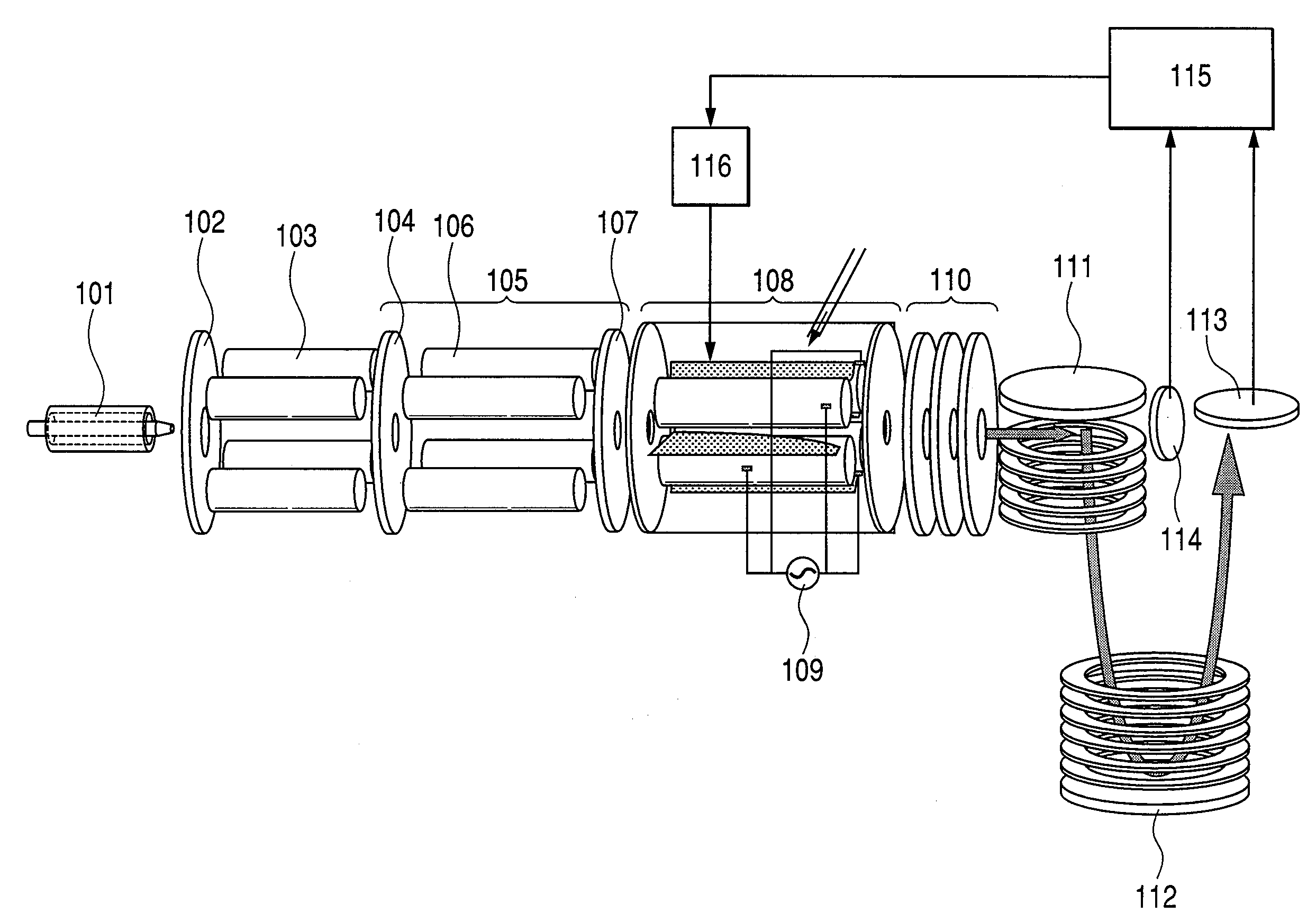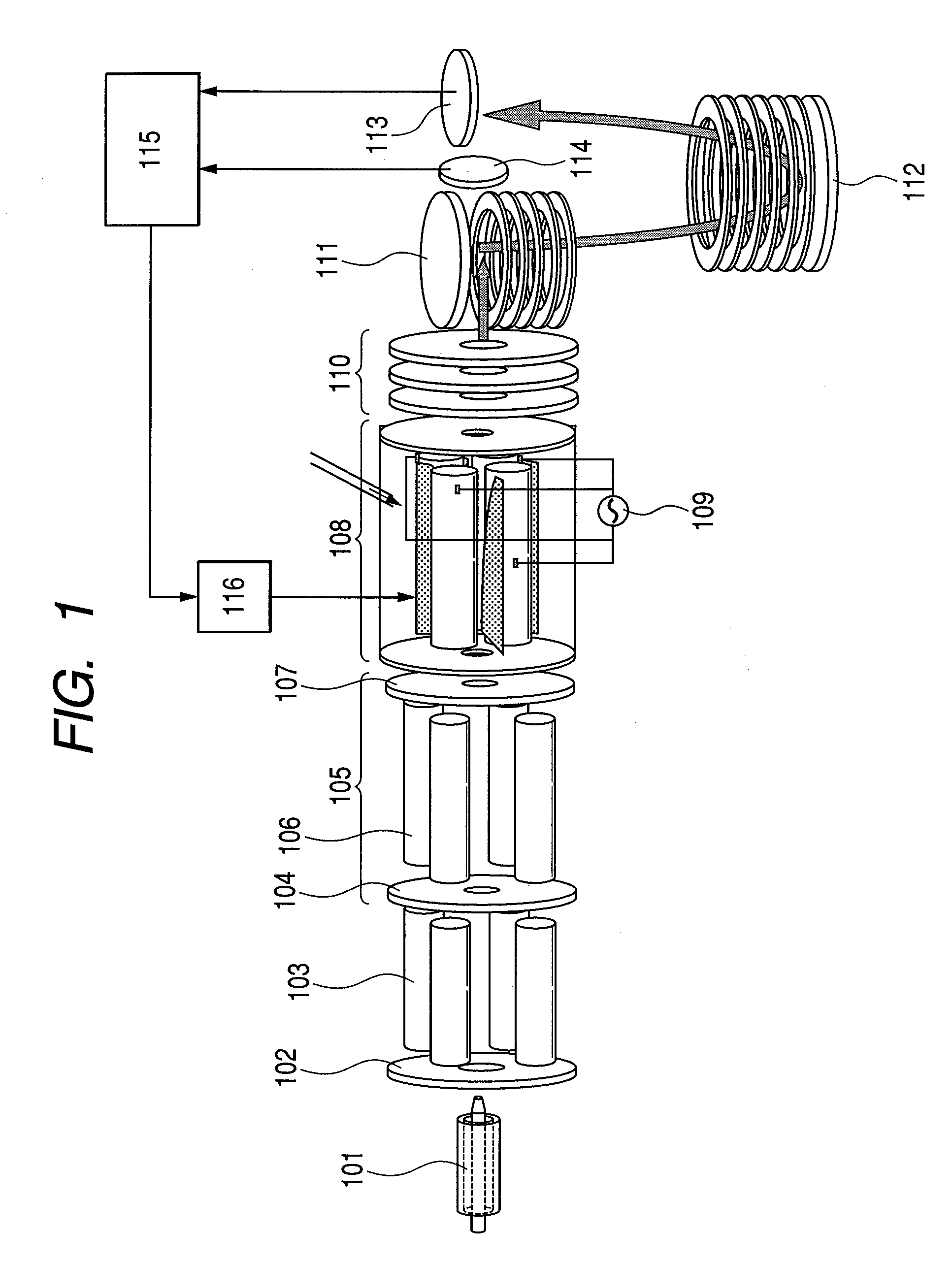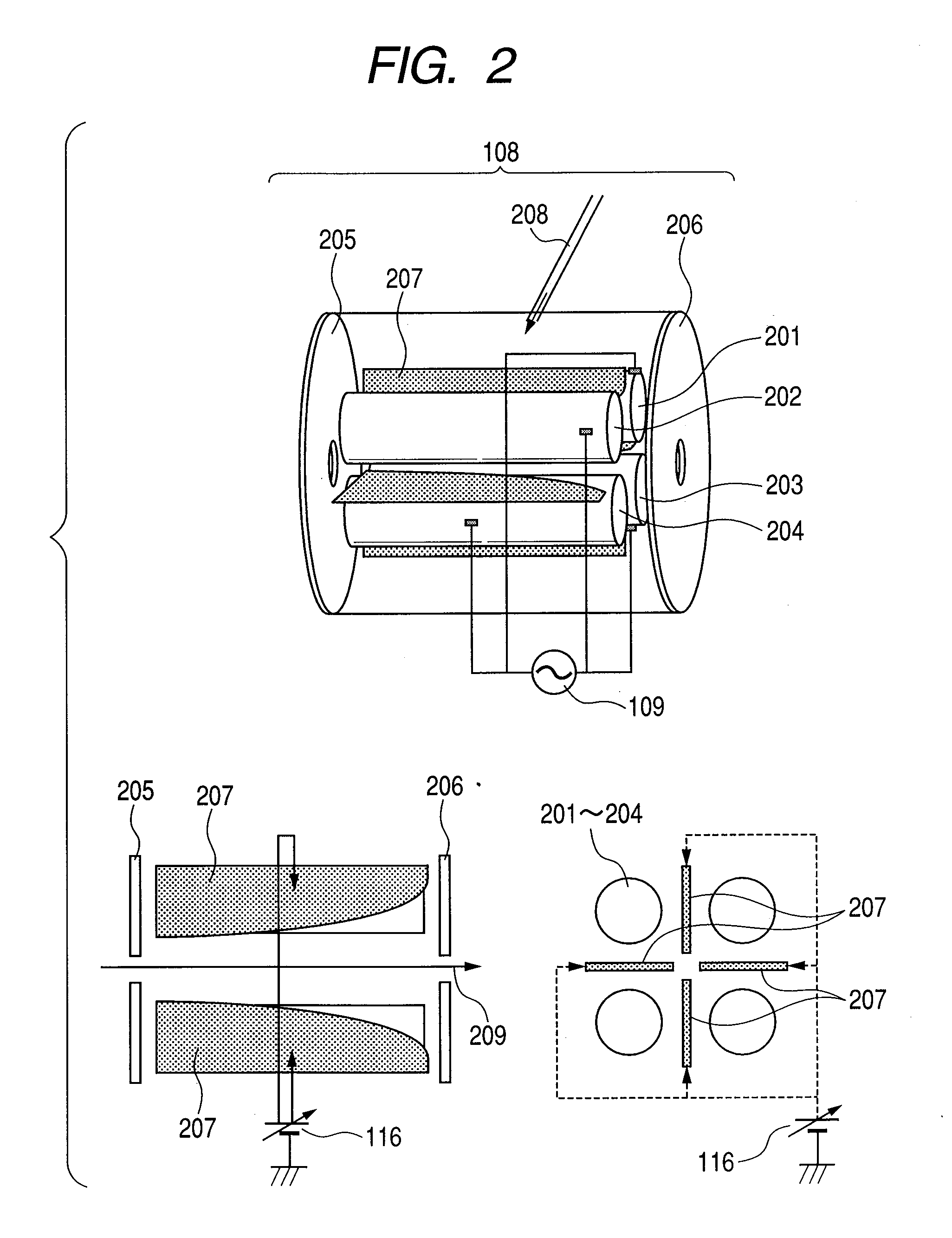Mass spectrometer
- Summary
- Abstract
- Description
- Claims
- Application Information
AI Technical Summary
Benefits of technology
Problems solved by technology
Method used
Image
Examples
first embodiment
[0034]FIG. 1 illustrates an embodiment of a mass spectrometer that controls ejection time of ions as described above with use of a collisional-damping chamber 108 that includes plural linear quadrupole electrodes that can apply a radio frequency voltage respectively and plural auxiliary electrodes, each being disposed between the linear quadrupole electrodes and capable of applying a DC voltage. Although linear quadrupole electrodes are employed here, they may be replaced with any devices consisting of 4, 6, or 8 rod electrodes respectively and a radio frequency is applied to every other rod of those rod electrodes.
[0035]In FIG. 1, a quadrupole linear ion trap 105 is disposed in the preceding stage of the collisional-damping chamber 108 disclosed in this specification and the time-of-flight mass spectrometer 111-113 are disposed in the succeeding stage of the collisional-damping chamber 108. While a time-of-flight mass spectrometer is employed here, it may be replaced with any detec...
second embodiment
[0048]FIG. 9 shows details of a collisional-damping chamber 901 in still another form. The upper diagram in FIG. 9 shows an external view of another collisional-damping chamber 901 and the lower diagram in FIG. 9 shows a cross sectional view of the collisional-damping chamber 901. The auxiliary electrode 902 of the collisional-damping chamber 901 in this embodiment consists of two parts. One is a metal electrode 903 consisting of a metal conductor that applies an electric field to an object and the other is a resistor or a resistance part 904 having low electrical conductivity and functioning like a resistor electrically. The metal electrode 903 forms a DC potential slope on the center axis of an object quadrupole. The low conductivity resistance part 904 makes a potential difference between both ends of the auxiliary electrode 902. The resistance part 904 is made of a resistor or conductive rubber, an insulator coated with a metal, or the like. Those two parts are connected alterna...
third embodiment
[0053]FIG. 11 is a detailed diagram of a collisional-damping chamber 1101 in still another form. The upper diagram in FIG. 11 is an external view of another collisional-damping chamber 1101 and the lower diagrams are cross sectional views of the collisional-damping chamber 1101. The configuration of the collisional-damping chamber 1101 in this third embodiment is the same as that shown in FIG. 4 except for the auxiliary electrode 1102. The auxiliary electrode 1102 has electrical properties like a resistance material and a dielectric material disposed between a conductor and an insulator. The auxiliary electrode 1102 is made of a material having lower electric conductivity than that of the conductor. This auxiliary electrode 1102 is used to make a potential difference of several mV to several V between both sides of the object. Consequently, this third embodiment can obtain the same effect as that in the first and second embodiments. Furthermore, the same effect can also be obtained ...
PUM
 Login to View More
Login to View More Abstract
Description
Claims
Application Information
 Login to View More
Login to View More - R&D
- Intellectual Property
- Life Sciences
- Materials
- Tech Scout
- Unparalleled Data Quality
- Higher Quality Content
- 60% Fewer Hallucinations
Browse by: Latest US Patents, China's latest patents, Technical Efficacy Thesaurus, Application Domain, Technology Topic, Popular Technical Reports.
© 2025 PatSnap. All rights reserved.Legal|Privacy policy|Modern Slavery Act Transparency Statement|Sitemap|About US| Contact US: help@patsnap.com



